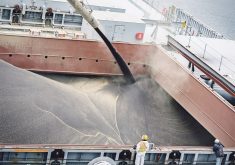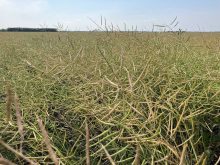Analysts now expect nine million tonnes of exports, well above Agriculture Canada’s estimate of 7.5 million tonnes
SASKATOON — Canada’s smoking hot canola export program has analysts flipping their pencils over to use their erasers.
Mercantile Consulting Venture bumped up its export estimate on its 2024-25 supply/demand balance sheet published in a recent edition of SaskCanola’s Canola Market Outlook.
Read Also

House ag committee to undertake several studies
The House of Commons standing agriculture committee has set its agenda for the coming months. Members began the fall sitting with a two-hour update on international trade
It is now forecasting nine million tonnes of exports, which is well above Agriculture Canada’s estimate of 7.5 million tonnes.
“The balance sheet looks more accommodating to farmers,” Mercantile’s managing partner, Marlene Boersch, wrote in her outlook.
“And we clearly cannot continue exports at the current pace.”
She said exports have been strong because canola remains competitively priced compared to soybeans.
And there is another important demand driver.
“Global vegetable oils remain fired up and look poised to bring in fresh buying interest, which will be the driving force behind a likely new record global crush,” said Boersch.
Her 2024-25 carryout figure of 2.27 million tonnes is in line with Agriculture Canada’s despite her much bigger export number.
That is because her total supply of 23.17 million tonnes is 1.34 million tonnes larger than the department’s due to her higher production and carry-in estimates.
Canada has shipped out 2.9 million tonnes of canola through week 12 of the 2024-25 marketing campaign, more than double the 1.31 million tonnes exported during the same period one year ago.
China was the big buyer through the first two months of the campaign, accounting for 78 per cent of sales.
However, other markets are heating up as well. Mercantile reports that 22,000 tonnes of canola was recently loaded in Thunder Bay, which it expects will be heading to the European Union.
That could be because the EU’s top supplier is running low on stocks.
Three-quarters of Ukraine’s available supplies for 2024-25 have already been crushed or exported, said Oil World, according to a recent Commonwealth Bank of Australia report.
The country’s stocks have been reduced to one million tonnes as of the end of October, half the volume of the same time one year ago.
Ukrainian farmers harvested 3.5 million tonnes of the crop this year, according to UkrAgroConsult.
Prices have been on the rise in Ukraine due to strong demand and dwindling supplies of the crop.
Rapeseed prices in the EU, which is Ukraine’s top export market, are also at a two-year high due in a large part to a poor domestic harvest.
Farmers in the EU produced 17.15 million tonnes of the oilseed, 13 per cent less than the previous year.
The EU is a major global importer of canola, and demand for the crop consistently outstrips domestic supply.
The region imported 5.5 million tonnes in 2023-24, down from the record 6.8 million tonnes the previous year.
The EU has imported 1.75 million tonnes of canola through the first 17 weeks of the 2024-25 crop year. That is up five per cent from the previous year.
Ukraine supplied 1.27 million tonnes of that volume. Canada has contributed a paltry 19,817 tonnes by comparison.
Australia has shipped 351,798 tonnes to the EU, and it is about to reload in a big way.
The Australian Oilseeds Federation is forecasting 5.44 million tonnes of production, down six per cent from last year’s 5.8 million tonnes, which was the third biggest crop in the country’s history.


















